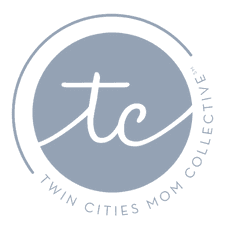You might have had a bad morning, but you didn’t have a “get to work late because you had to explain death to the preschooler after she saw your beloved family dog murder two baby rabbits” kind of morning.
To be fair, we were already having a rough day. Peanut melted down inexplicably over everything since the moment she woke up and her little sister found great delight in undoing anything I managed to do. I could see the light at the end of the routine – that moment when I know I just have to get the kids in the car and we’ll be okay. I asked Peanut to let the dogs back in the house, as letting the dogs in and out of the yard is one small chore our 3 1/2 year old helper loves to do. She tore off while I wrangled shoes onto the little one.
Instead of returning with our two mutts in tow, she sprinted back to me. I could not register the emotion on her face. For the first time, I understood the phrase “eyes as big as dinner plates.” “Mom,” she gasped, “I tried to let the dogs in, but they wouldn’t come ’cause Lilly found some bunnies and now she’s eating the babies.”

I don’t love rabbits. We garden, and our lush suburban yard proves too tempting for these fuzzy veggie-stealers. My farmer father curses the adorable monsters for regularly destroying his tender plants. Rationally, I know that the world will not miss a few extra rabbits. Rationally, I also know that the breeds mixed in our friendly family beast include those with a strong hunting instinct. For that matter, I know that this isn’t the first time I’ve discovered our sweet pup with a tiny, furry thing in her jaws. She’s a good dog and what she did was likely inconvenient at worst. On its surface, this was no crisis.
However, ever since I had children, my heart has lost its rationality. I no longer process things like death and pain on that level. I could only process that my animal wanted to kill two babies. But worse even than that, it was my own baby who had watched it all happen. I rushed out to the yard, called off the dogs, and while my two daughters pressed their faces to the patio door, I looked for the victims.
I found them. Two small, grey-and-white rabbits, just barely bigger than my hand, both dead in the grass with hardly a mark on them. I went back inside to get shoes and gloves so I could properly dispose of the bodies.
“Are they okay, Mom?” my Peanut asked me.
I had two choices. I could tell her a lie, one that said that the bunnies got away, I just needed to clean some stuff, thanks for calling me in time to save them, and let’s get on the road without incident. Or I could tell her the truth, the hard reality, the one that her face told me she already knew. I took a breath as tears prickled in my eyes.
“No, baby, they’re dead,” I told her, swallowing a sob. “Lilly killed them.”
She started to cry, too. I’m not sure if she cried because I cried or because she felt that same pain of a tiny life ending, however inconsequential, but she cried. Her tears turned to howls. I hugged her while her sister, still oblivious in her toddlerdom, observed with uncharacteristic calm. I kissed them both and headed out to the yard to finish what my dog began.

Afterwards, when I had cleaned up and both girls consented to getting into their car seats for the drive to daycare, the questions started. Once again, I had two choices. I could shut them down, either by telling her lies or by dismissing and distracting. Or I could tell the truth.
I chose the truth.
While I had not intended to have such a frank conversation with my child about death, especially not just yet, I could not ignore the need. She knew what she saw. It happened in front of her face. She knows bunnies to be sweet, kind, cuddly, and innocent. She knows her dog to be the same. How should she reconcile that an animal she loves ended the lives of animals that she loves? What did Lilly do? Why are the bunnies dead? What happens when they die?
It was just bunnies, but it was time to talk about death. As anxious as the thought of such a conversation made me, it didn’t actually seem so bad as long as I kept it simple, felt comfortable with what I believe, and told the truth. I’m not going to assume that our conversation can perfectly prescribe the conversation you will certainly have with your own child someday, but maybe some of our conversation can help you when you have a similar, inevitable talk.
- Answer clearly and frankly. Legitimize your child’s questions with earnest, honest answers. When my kid asked me what happened, I chose to tell her: “Lilly thinks she needs to keep animals away from us to keep us safe. She doesn’t know that bunnies can’t hurt us, so she caught them and killed them.”
- Name emotions and permit their expression. Peanut expressed fear over watching the animals die, anger at her dog’s actions, and sadness at the death of the bunnies. Fear, anger, and sadness are appropriate emotions. Help your child name them and act on them in healthy ways. For example, crying because you’re sad is okay. Hitting your sister because you’re angry is not.
- Permit your own emotions. Seeing you cry or grieve helps your child do the same. Try not to put your child in a place where she feels she must care for you, but help her understand that grown-ups can get upset and she doesn’t need to be scared.
- Don’t rename death. The bunnies were not sleeping. They did not pass away. They are dead. Don’t hide from the reality of it. Being afraid to say the word “dead” only makes your child afraid of death, or possibly confuses death for something else.
- Talk about what you believe. If you have a religious tradition, understand what it says about death and an afterlife. If you do not claim a particular tradition, consider what your own personal beliefs might be when it comes to a soul or heaven. If you do not have any religious beliefs, don’t make something up. Express your ideas simply. Regardless of your stance, consider telling your child that while life has ended, the life can still be celebrated.
- Be ready to repeat. Especially for younger children, repetition builds understanding. You might have to tell the story of the event over and over, or continue to answer “Why?” to a question you already covered. I hated talking about it for the rest of the day, as I just wanted to put it out of my mind, but Peanut needed to process. I can help her do that by sticking to the story.
Today was bunnies. Tomorrow might be the death of that beloved pet herself. Next week might be the death of someone much more dear, like a friend or grandparent. If you find yourself discussing those kinds of losses, please, consider finding even more resources. The Twin Cities has some incredible resources for support groups and lecture series. For instance, my congregation helps support Growing Through Loss in the southern suburbs. Fairview Youth Grief Services provides seasonal support groups for kids ages 4-18. Park Nicollet also has a Growing Through Grief program for youth. You can start the conversation and trusted professionals will help you continue it.
In my work, I deal with death all the time. I have talked about death in more contexts than I can even count. The stakes were low and my comfort was high. It was still hard. Don’t be afraid to talk about the hard things, even when the hard thing isn’t that big of a thing. These conversations help you practice for the big stuff. They help your child learn that she can trust you to hear her fully and tell her the truth. It’s worth being late for work to talk it out. It’s not fun to talk about death, but together, maybe we can talk about it a little more and at least make it a little less hard, for each other and for our kids.



